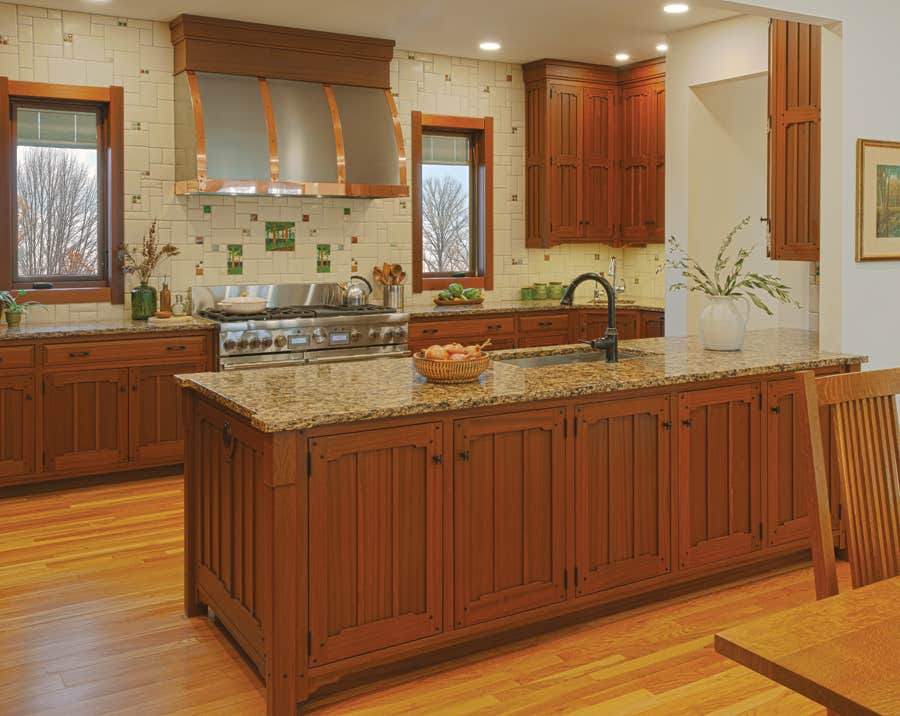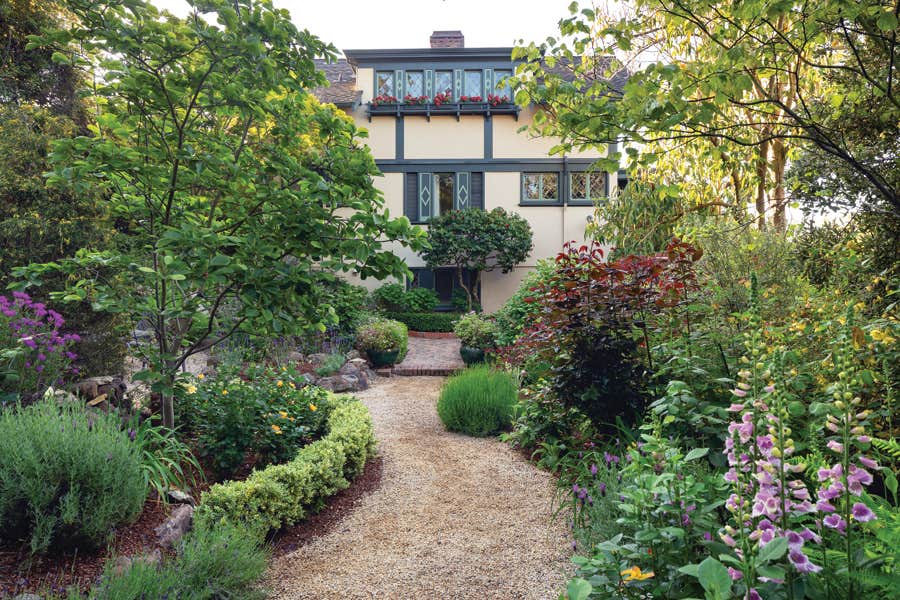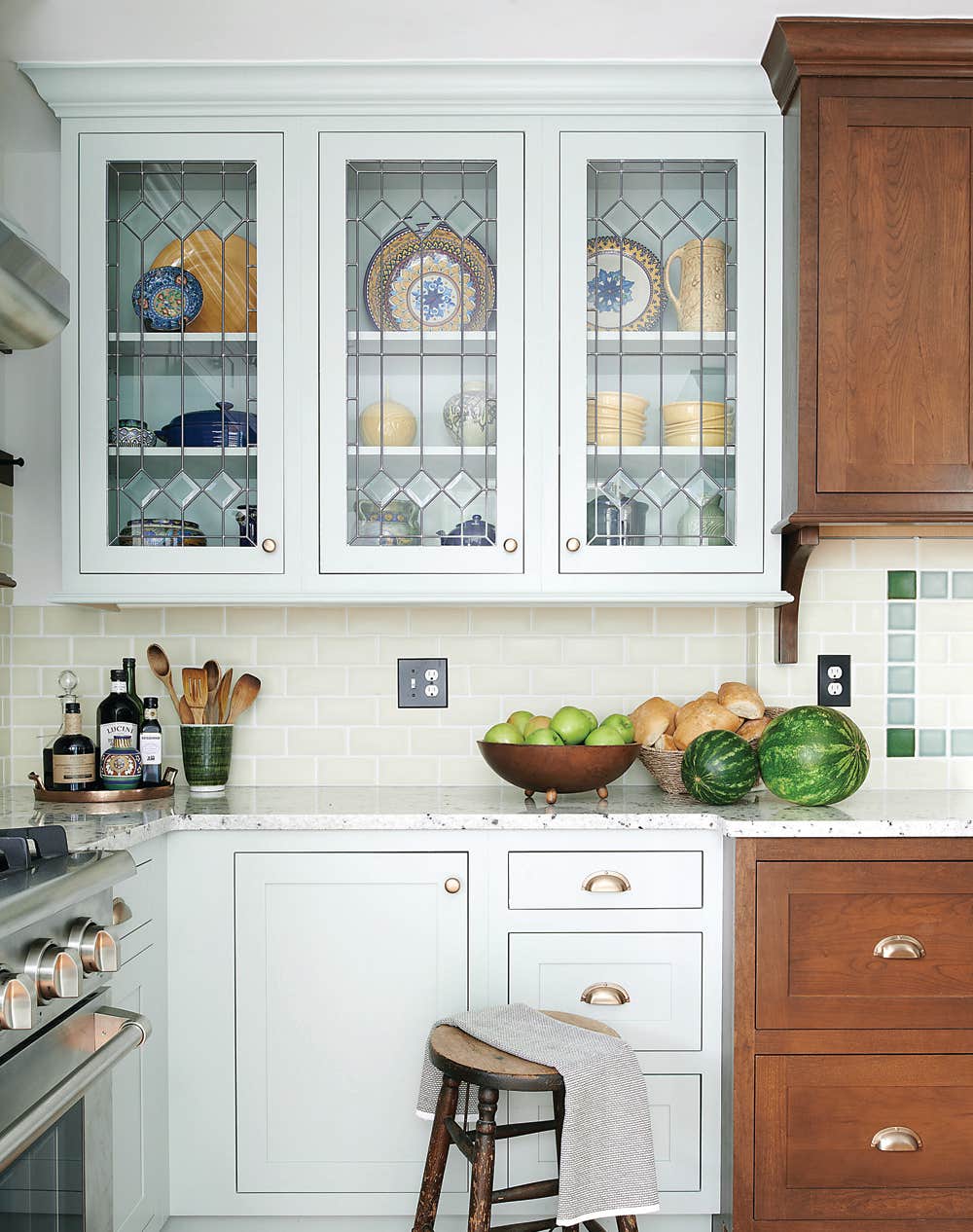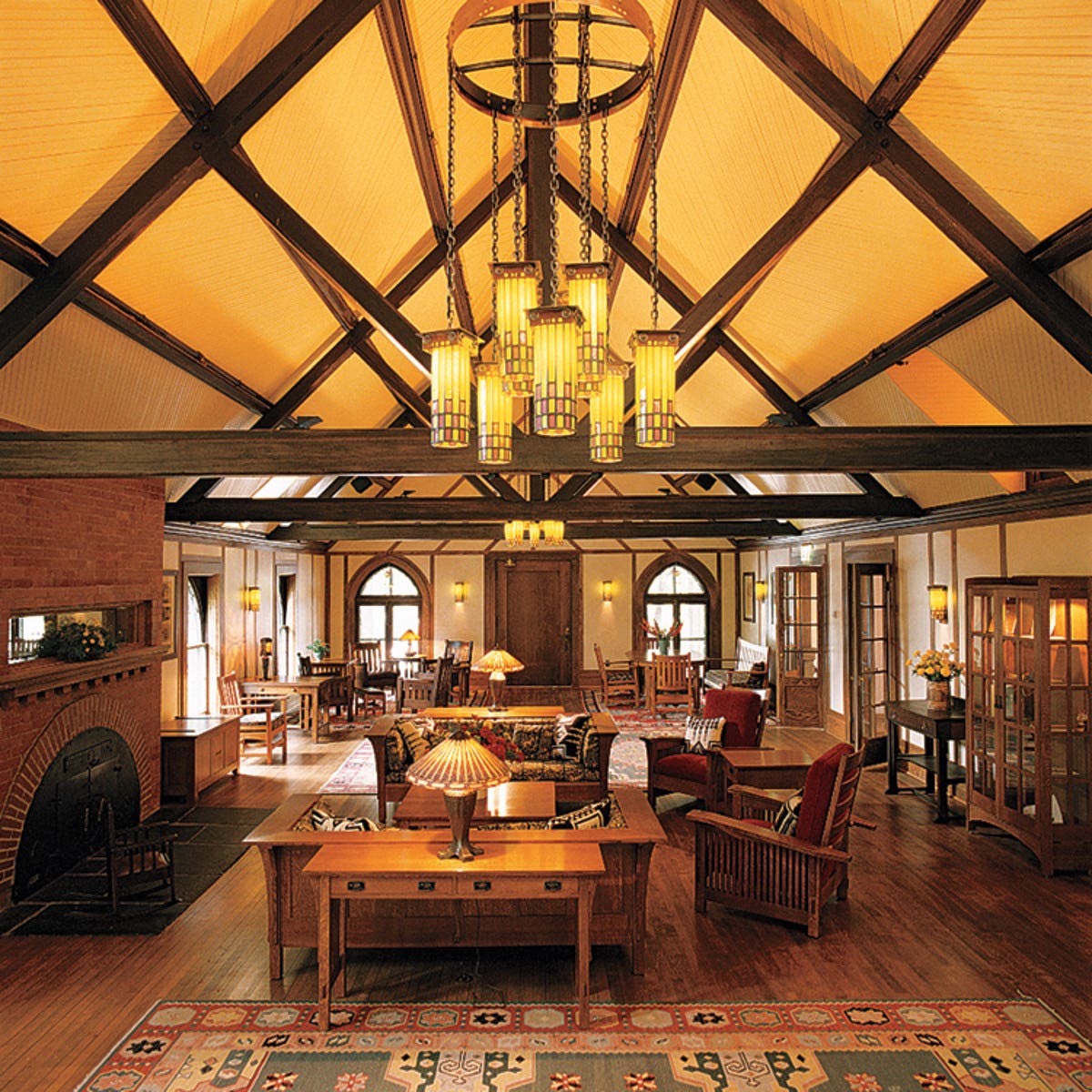A Charming New Kitchen for a Tudor Revival
Architect and owner collaborate on a new cook’s kitchen with house-inspired details, and color.
This Seattle homeowner loves to cook and spends a lot of time in the kitchen. Though she and her husband were smitten by their Tudor Revival home’s storybook details (arches between rooms, a Batchelder-tile fireplace), they were frustrated with the remodeled kitchen they inherited. It was small and awkward, with inadequate countertop space; and a large cabinet blocked the view of Puget Sound from the dining room. Canary-yellow walls and Santa Fe-turquoise tiles were out of place, and with so little storage space the good china had to go in the linen closet upstairs.
The couple contacted architect Tom Nychay to help them realize their vision for a new chef’s kitchen, efficient and practical but with period details in keeping with the 1937 house. They began by bumping out the front wall six feet, allowing enough room for cabinets, storage (now one drawer is dedicated to lids!), and even an island. A settle replaced the big cabinet that had blocked the dining room.
Existing architectural elements were picked up in the new room: arches, heavy moldings, diamond-glazed windows. An arched passageway leading to the entry hall became a walk-through pantry. Morning light pours in through new windows in the north and east walls, kept tall and narrow to maximize cabinet space. A window of glass block behind the stove, framed with opalescent tile, lets in light while obscuring the neighboring house. The ceilings are a generous nine feet, so the architect suggested box beams to emphasize the Tudor style and unify the room.
Both homeowners are graphic designers who appreciated the role color would play. Preferring the classic, timeless look of a black and white kitchen, they started with black soapstone for countertops and white subway tiles for the backsplash, adding black knobs and pulls. Then they added bursts of orange with Le Creuset cookware and FiestaWare.
The faint blue of the glass blocks is echoed in vintage turquoise FiestaWare bowls that had belonged to an aunt. Floors are rift-sawn red oak, which warms and softens the black and white room. Always a handsome and sturdy house, the pre-war Tudor now has better street appeal with the addition of flagstones, punctuated by a low-maintenance garden of boulders and shrubs, in front of the kitchen bump-out. The entry remains centered on the façade.
Sources:
Architect Tom Nychay, principal, Sortun-Vos Architects, Seattle, WA: (206) 545-9100, sortun-vos.com
Contractor Douglas Johnson & Co., Seattle, WA: djandco.com
Artists “Feathers” watercolor by Carol Riley, Gearheart, OR: carolriley.com and Max Grover, Port Townsend, WA: (360) 774-0663 [find on Facebook]
Apron sink Blanco: blancoamerica.com
Subway tile Neri Collection by Adex: adexusa.com
Glass tile Chiaro: chiarotile.com
Lights Dome-SI Coax Pendants by LBL Lighting: lbllighting.com
Faucets ‘The Spirit of Water’ by Donrbracht: dornbracht.com
Range/vent Wolf: subzero-wolf.com
Fridge Sub-Zero: subzero-wolf.com
Dishwasher Miele: mieleusa.com
Clock re-edition of the Ball clock by Vitra, purchased through Lumens: lumens.com
Kitchenware Droll Designs Pottery: drolldesigns.com
Stools Swivel Bar Stool by McGuire Furniture: mcguirefurniture.com
Paints LoVo from C2 Paint: c2paint.com Walls ‘Hush’, ceiling HC21 eggshell finish, window sash ‘Firenze’, cabinets, bases, bench ‘Frostine’
Brian D. Coleman, M.D., is the West Coast editor for Arts & Crafts Homes and Old House Journal magazines, our foremost scout and stylist, and has authored over 20 books on home design.








